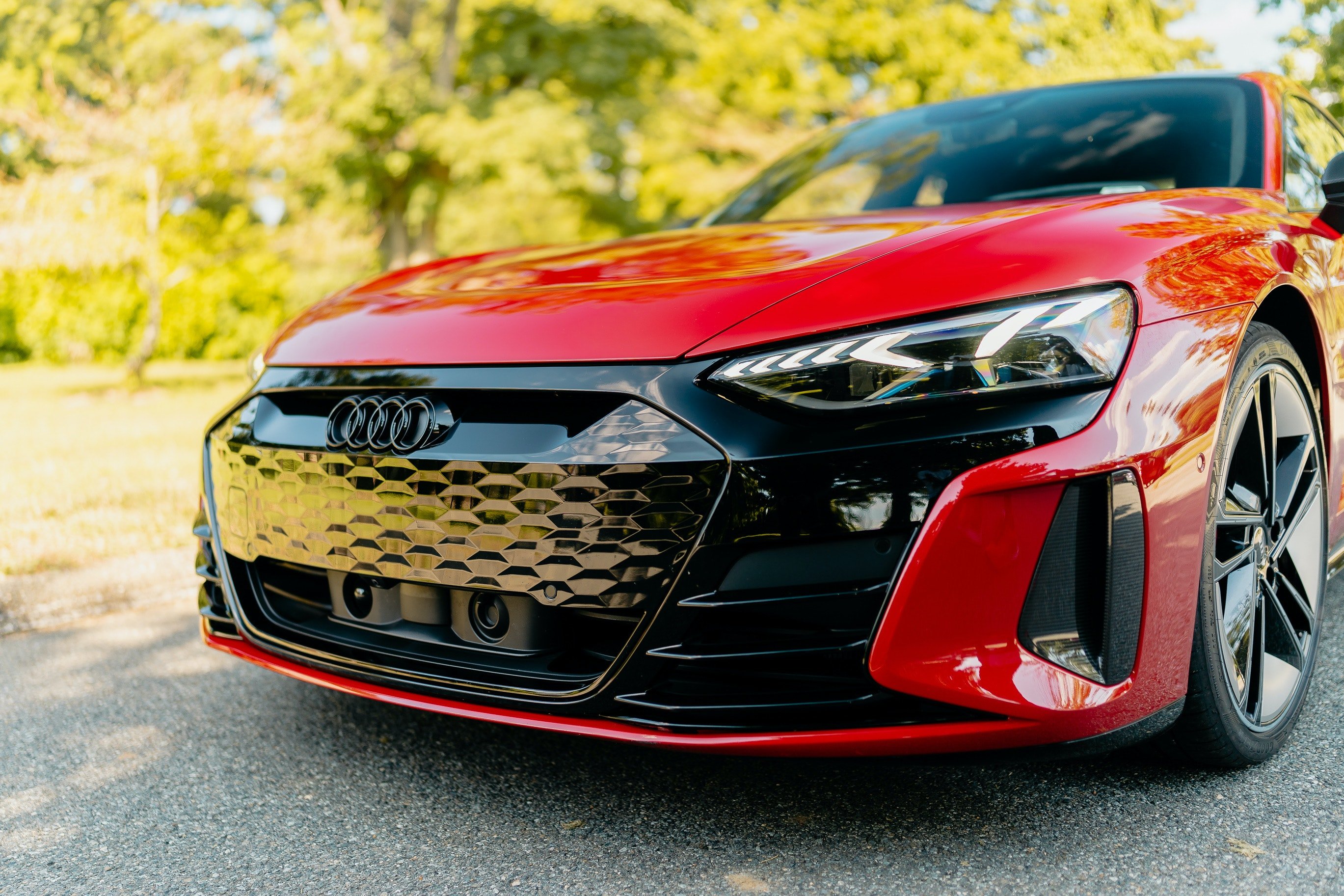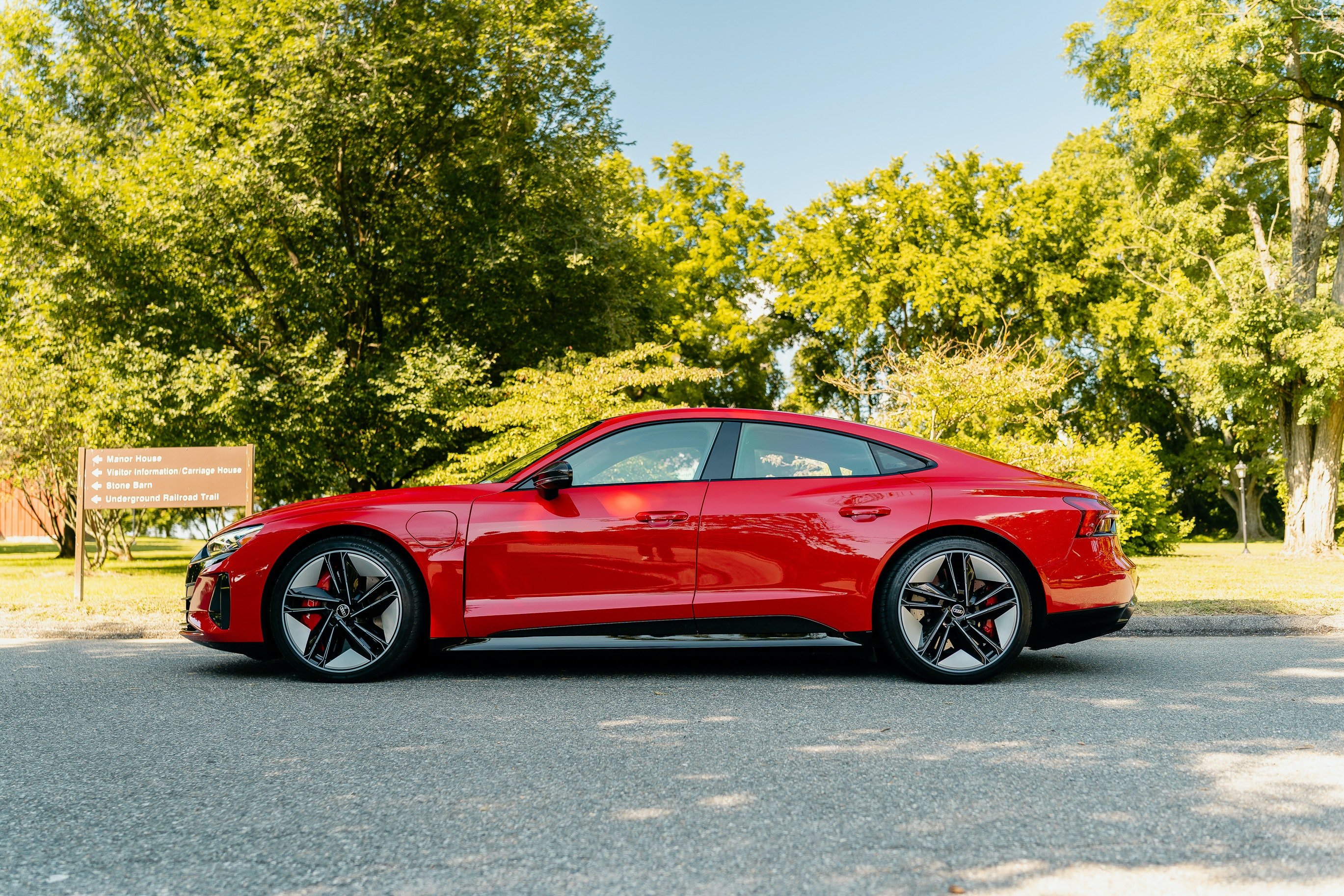2024 Audi Q8 E-Tron and SQ8 E-Tron First Drive: New name, better package, more fun
Lanzarote, Canary Islands - The 2024 Audi Q8 E-Tron enters a completely different world of electrification today than when it went on sale as the E-Tron in 2019. The iX, Mercedes-Benz EQE SUV and Rivian R1S among others are here to join Audi Stealing slices of Tesla pie.
Of course, the realities of owning an electric car are different than just driving to the grocery store and back. Since the E-Tron's original launch, Audi tells us its customers' number one concern was range - the E-Tron hit the world with a range of just 204 miles on a full charge. Minor updates bumped that number up to 226 miles for 2023, but the 2024 Q8 E-Tron tries to put all range concerns to bed. While the EPA numbers aren't yet available, Audi says its goal is for the final number to start with a "3," which means the SUV will be good for more than 300 miles of range. Expect the returning Sportback to be a slightly better SUV with a more naturally aero-friendly silhouette.

How does Audi achieve this? In short, a more energy-dense battery pack and several efficiency improvements. Previously, the E-Tron had a 95 kWh battery with a usable capacity of 89 kWh. The battery pack with a usable capacity of 106 kWh. Audi has increased battery capacity without increasing the physical footprint of the package, allowing it to keep the same platform packaging as before. This greater energy density is achieved through battery stacking technology, which is new to the E-Tron, and for the true battery nerds, we'll note that Audi uses prismatic battery cells now instead of the bag cells used when the E-Tron began production.
You should expect a range increase of about 19% across the larger battery pack, and that's before factoring in the efficiency improvements made to the Q8 E-Tron that'll help move it over the line to 300 miles. The big improvement is the new rear electric motor for the Q8 E-Tron 55 - note that the following does not apply to the SQ8 E-Tron. The number of stator turns in this motor is increased to 14 instead of the 12 seen in the previous motor. In layman's terms, this ultimately allows Audi to retain the same power output as before, while using less power. Audi has also changed how power is distributed to each axle of the all-wheel drive system. Previously, the E-Tron used the front motor at the same speed. Now, it uses the newer, more efficient rear engine to move forward, resulting in more efficiency in this type of drive. Of course, the front engine will kick in as soon as extra traction is necessary, and it almost always provides power when the car is in "Dynamic" or "S" modes.
Besides the powertrain, Audi has turned its attention to making the Q8 E-Tron more streamlined than the E-Tron. First, a new lower intake grille has been implemented and features electrically operated shutters. This opens when cooling of the drive and brake components is essential, but otherwise remains closed while driving. The new air curtain design, combined with the new wheel wings, reduces air resistance. The new spoiler is much larger than before to better direct airflow around the tires, and Audi attributes half of the Q8 Sportback E-Tron's air-efficiency gains—with an overall drag of 0.27 from the old model's 0.29—only to these gains.
As for the digital side mirrors you see on the Euro-spec cars we tested, they won't be making it to the US anytime soon depending on overseas regulations. It's another point at 0.02 at break even, but after giving them a chance over a couple of days, we wouldn't pass it up. More time in familiar environments and different weather conditions would have helped the adaptation process, but the perspective switching required to use screens was annoying. It takes mental retraining, and even if you get there, vision is compromised versus a regular mirror as you can't adjust your head position or angle of view to get additional vision - what you see on the screen is what you have. However, detailed yellow and red charts around the screen for blind spot information are helpful.

Another big change point from the E-Tron to the Q8 E-Tron is in the chassis and steering. The E-Tron felt significantly overweight and bulky, so a number of updates were made to make it more agile and handle better. The most obvious change is the steering. Audi says the ratio has been lowered from 15.8:1 to 14.6:1, thus reducing the steering input needed for the car to change direction. Additionally, there is a new, stiffer bearing for the front axle, and Audi says this helps improve feedback and steering feel. The steering is indeed heavier in "Dynamic" mode than before, but not excessively so. As a final touch, the air suspension and electronic stability control systems have been completely retuned to suit a car intended to change direction in a quicker, sharper manner.
Yes, the Q8's 408 horsepower and 490 lb-ft of torque are still up to the task of hauling a heavy nugget of metal nearing 6,000 pounds, but this heavy nugget of metal is keener and more willing to sprint up and down mountain road without feeling gritty. the place. Don't expect the Q8 E-Tron to behave like the Cayenne or other sport-focused SUVs, and you won't be disappointed. Now, drive the SQ8 E-Tron with 496 horsepower and 718 pound-feet of torque, and a smile might start to spread across your face.
Where the Q8 E-Tron looks fresher and feels fresher is outside. Audi debuted a slew of new branding, including its flat/illuminated four-ring logo, laser-etched model designation in the B-pillar and new rear badging. Don't be confused if you see the red Audi Sport on more models than just the S and RS models, even the Audi with the S-Line appearance package gets it now. To transition from the E-Tron to the Q8 E-Tron, Audi gave the car a new front fascia, fancy new digital matrix LED headlights (which won't be available in the US for an indefinite period of time) and a redesigned rear valance. S models have the bright aluminum look, but you can opt for a darker package if you prefer a more stealthy look. However, there is no bad way to specify the specification of this car. It's a neat-looking electric car, and the continued presence of SUVs and sports cars means you can even choose your own rooftop adventure.

And if you're wondering why the name was changed, Audi says it is because this puts the model where it belongs in the lineup, right at the top as a flagship in the same sense that makes the gas-powered Q8 a flagship model. Audi said the plain old "E-Tron" was used to launch the brand as a marketing exercise in the same way "Quattro" was used as a model, but was later . we. Now that people know that "E-Tron" stands for "electric Audi," the company believes it's time to include E-Trons in the lineup in the same way as other Audi models where the numbers indicate where they belong.
Pricing for the Q8 E-Tron is expected to increase, but not excessively, ensuring it remains competitive—and buyers are unlikely to get an EV tax credit. Keeping up with a shiny new BMW iX, Mercedes-EQ SUV, or any new extraterrestrial electric car isn't easy, but the Q8 E-Tron presents itself as a great alternative, especially if those other options don't suit your taste. With a 300-mile range, vastly improved aerodynamics, a sleek new design and all the luxuries we've loved before, the Q8 E-Tron and SQ8 E-Tron make a much stronger case for your money than the original E-Tron ever was.
